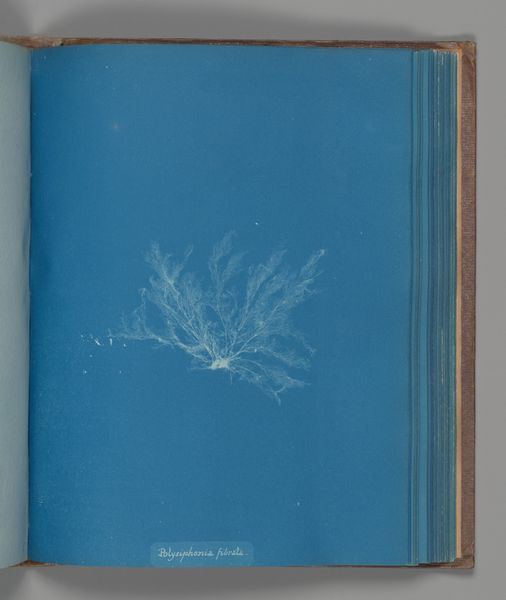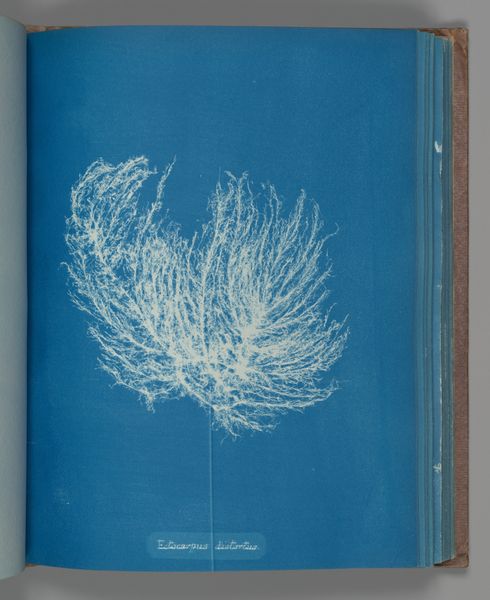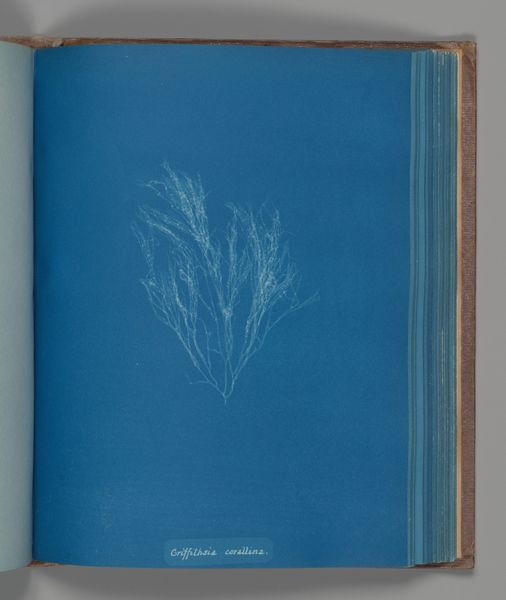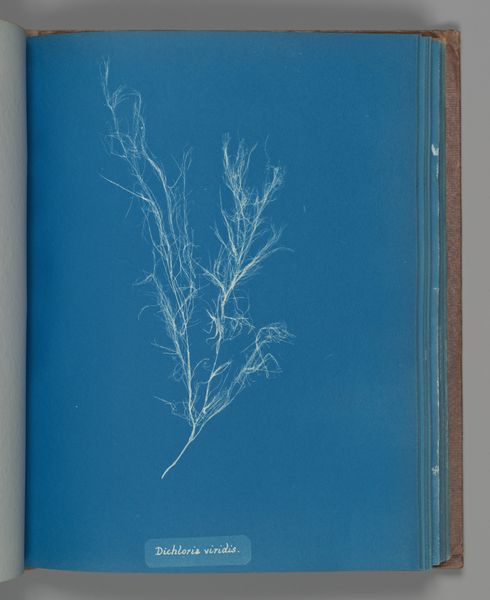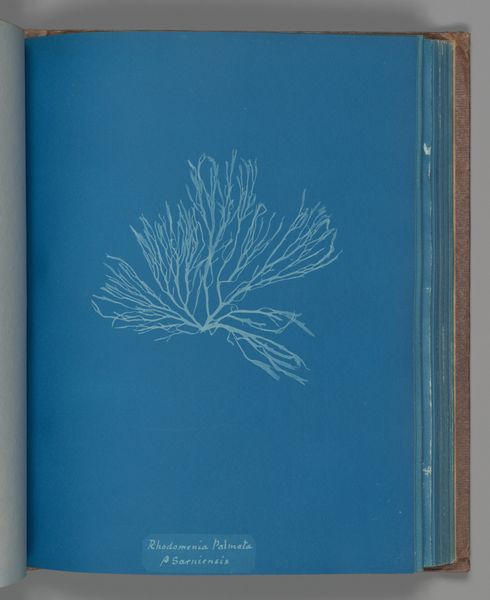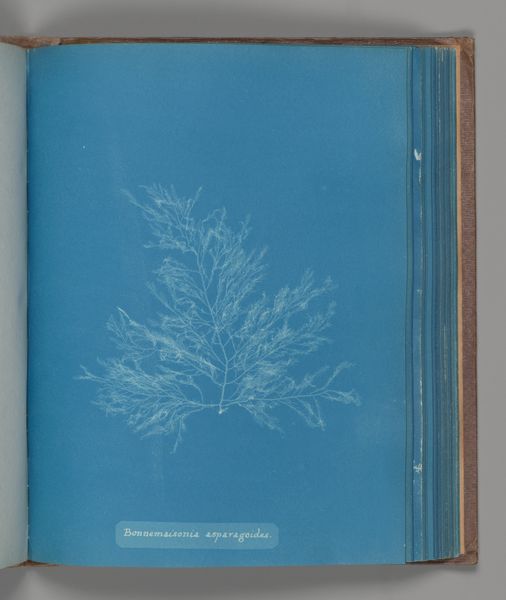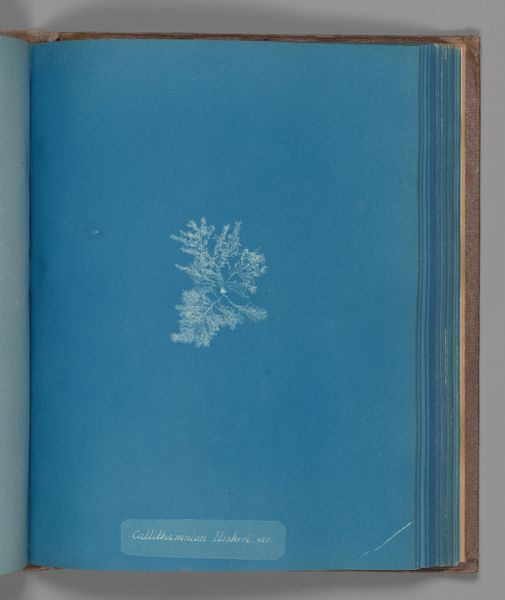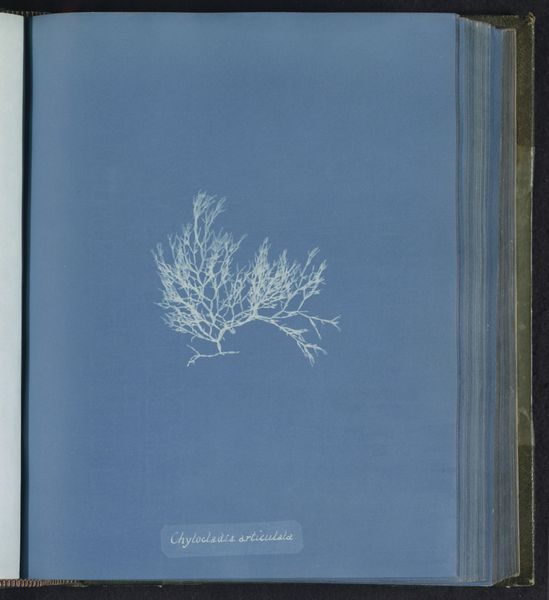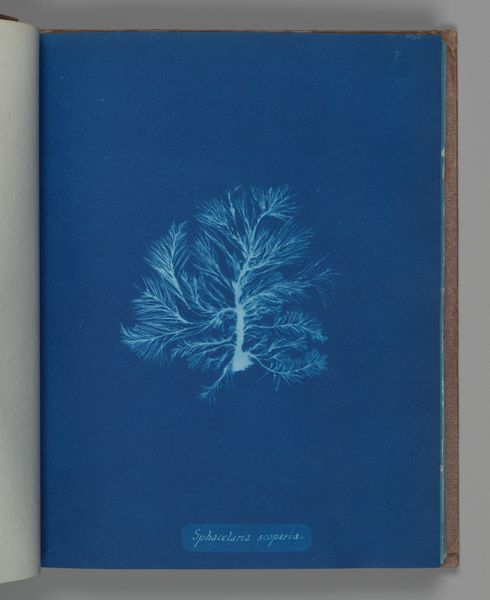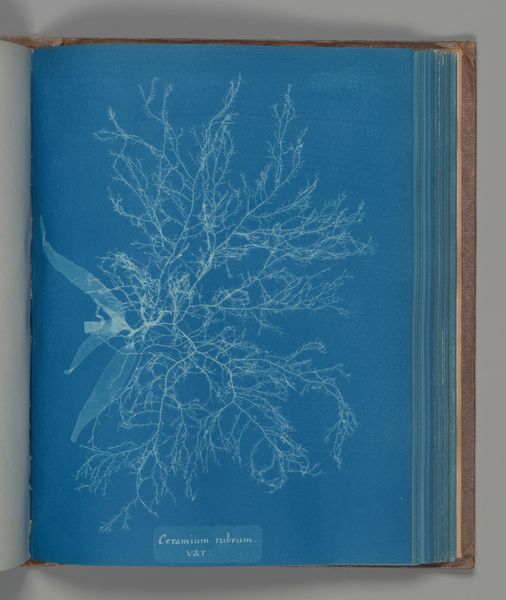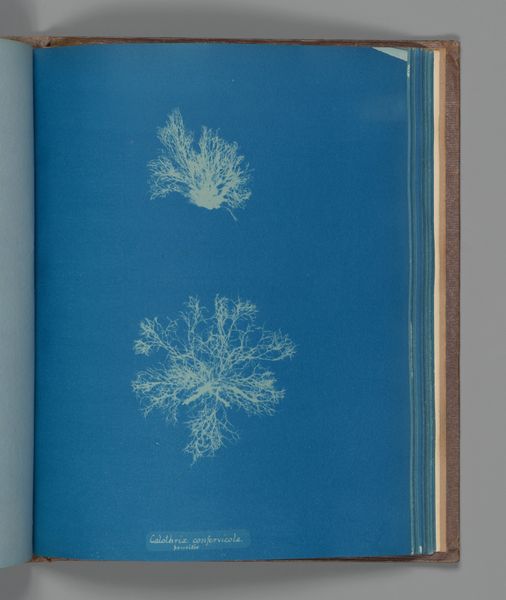
print, cyanotype, photography
#
still-life-photography
# print
#
cyanotype
#
photography
#
line
#
naturalism
Dimensions: Image: 25.3 x 20 cm (9 15/16 x 7 7/8 in.)
Copyright: Public Domain
Anna Atkins made this cyanotype of *Gloisiphonia capillaris*, a type of red algae, in the 19th century. The cyanotype process, an early form of photography, involves coating paper with a solution of iron salts and exposing it to ultraviolet light with an object placed on its surface. Here, the detailed form of the algae appears in white against a vivid blue ground, the result of the light-sensitive chemicals reacting to the sun. The process is relatively simple, but it demands patience and an understanding of the interaction between chemistry and light. In Atkins’s time, photography was rapidly evolving, and it is often framed as a technological advance. Yet, she used it in tandem with established methods of scientific documentation, combining artistic sensibility with botanical study. By considering the labor-intensive processes of both scientific classification and photographic printing, we can appreciate the rich intersection of art, science, and craft in her practice, and the value of challenging traditional distinctions between them.
Comments
No comments
Be the first to comment and join the conversation on the ultimate creative platform.
